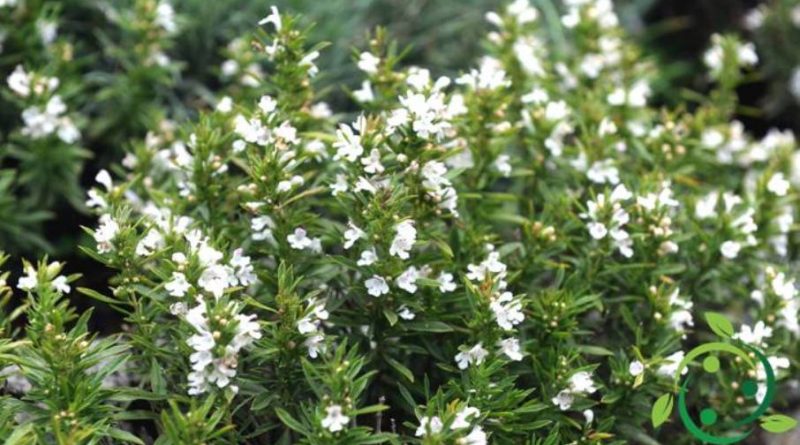How to cultivate the mountain savory
How to cultivate the mountain savory
The mountain savory (Satureja montana L., 1753) is a perennial and aromatic herbaceous species of the Lamiaceae family, native to central and southern Europe, northern Africa and Asia. In this sheet we will see how to cultivate the mountain savory with the agronomic techniques and the most appropriate measures.
The mountain savory is a plant that prefers calcareous soils and well exposed, not afraid of low winter temperatures, nor the return of cold; moreover it is very resistant to very rigid climates, provided that there are no water stagnations in the soil; moreover it also tolerates long periods of drought.
As far as propagation is concerned it can be done either by gamica or by agamic way. With the first method, sowing is carried out in seedbeds from October to November, in a greenhouse, in warm boxes, which allows to anticipate transplanting at the beginning of spring; this technique is much safer than direct seeding in open field. If you must do it in the open field must be done in the period of October. In order to carry out autumn or winter transplants, the seeds can also be sown in cold boxes outdoors in the months of May-June. To facilitate germination the seed can be previously treated with warm water, or with hormones. The germination of the seed can be high provided that a correct level of humidity is guaranteed to the soil and the above conditions are respected.
For the transplantation it is necessary to wait until the plants have reached the height of 8 – 10 cm and the optimal period corresponds to the months that go from March to the beginning of May. Obviously the propagation by seed from very heterogeneous seedlings due to the remarkable variability of the species. To avoid this, and to have all identical plants, we can operate the division by tufts, which allows to have uniform plants; This operation should be done in autumn or early spring, taking from the head of an old crop the peripheral branches, which are provided with roots; from a mother plant, up to thirty individuals are obtained.
Another method of multiplication is that of the offshoot, which is always and only performed on the young branches of plants aged no longer than one year. Also in the winter months, until the beginning of spring, it is possible to transplant also bare root seedlings with excellent results of engraftment.
Regarding the planting weights we recommend 60 to 100 cm between rows and 30-40 cm on rows, also depending on the cultivation system adopted (manual, with mechanical organs, etc.)
For fertilization it is advisable to intervene, before implanting, with organic substance (mature manure or compost) to be mixed and mixed with the soil at the beginning of spring. In the years following the first one, before the vegetative restart, bring only organic substances and never use nitrogen of mineral origin.
As for the cultivation treatments, during the first year it is very important to perform weeding in the row and along the row, even with a certain frequency so as to guarantee a reduction of weeds and water losses by capillarity in the drier months. From the second year of cultivation the processing is limited to some weeding in spring and after mowing. As an alternative, instead, it is very useful to use vegetable packaging (leaves or straws) which will eliminate the need for the weeding and, moreover, contribute to the integration of the organic substance.
As far as irrigation interventions are concerned, they are limited to transplanting, especially if it is carried out in late spring and / or during periods of drought, after each mowing to stimulate the reclamation of the plant. Absolutely avoid rain irrigation.
For the collection of small surfaces we proceed obviously love; for large extensions we use mowers or mowers, where you need to adjust the cut at a height of 5 – 8 cm from the ground so as not to compromise the vitality of the plant. For maximum yield in essential oil, it is carried out in late July, early August, when the plant is in full antesis, or between June and July for the collection of leaves. In this case, if the period of mowing is delayed, losses are incurred, as the leaves, inserted at the base of the stem, dry and fall. The phenomenon is natural and is partly due to the density of the plant.
As far as adversity is concerned, the mountain savannah is a very resistant plant, provided that it does not exceed the irrigations and do not use synthetic nitrogen fertilizers.
The production yield is between 80 and 120 q / ha. The final yield is low (15 -20 q / ha) as there is a decrease of 70-75% between green and dry and a further loss of weight determined by the cleaning operations. The quantity of essential oil on the green ranges between 0.18% and 0.20%.
The mountain savory is used for its fragrant, aromatizing, stimulating, digestive, carminative, antispasmodic healing properties; it is used in the form of infusions, decoctions, and in the kitchen as a flavoring.

